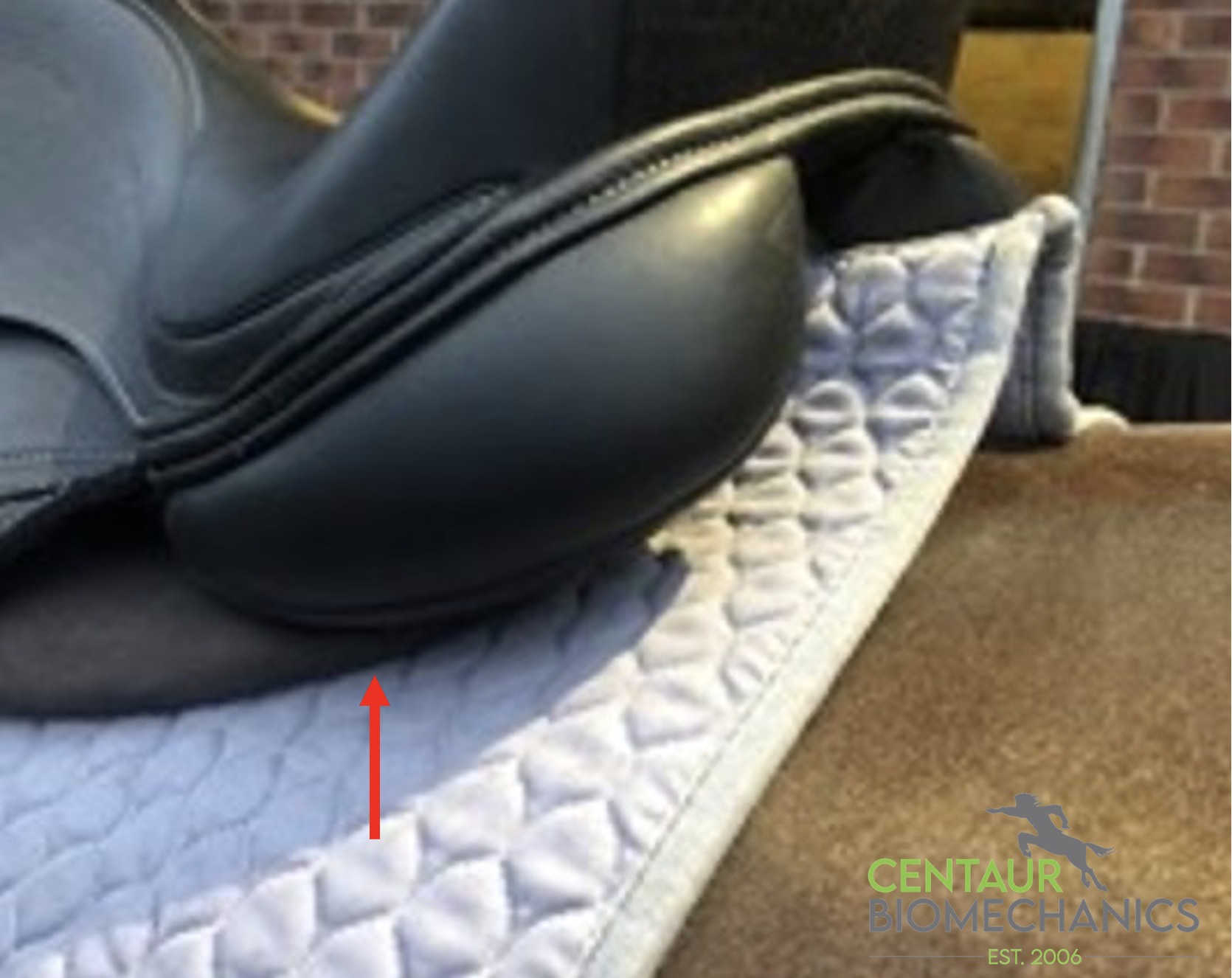
There are a number of reasons why riders may choose to use a half pad; to improve saddle fit, help rebalance the saddle, provide increased comfort to the horse, and in some cases the half pad may be a fashion accessory. Previous blogs have discussed the effect that a half pad can have on saddle pressures when trotting and cantering in a straight line. In brief, we have demonstrated that the addition of a wool or medical grade closed cell foam half pad, was useful in reducing saddle pressures beneath the caudal region of the saddle, whilst not increasing saddle pressures in the cranial region. In contrast, gel half pads were found to increase pressures in the cranial region, and did not offer any pressure reducing benefits in the caudal region (1). Other groups have quantified different half pads whilst the horse is trotting on a treadmill (2,3). Although there are multiple half pads available with limited research, dynamic (ridden) studies are underway quantifying the effects that a half pad has on saddle pressure distribution and equine locomotion. It is important to check that the addition of any half pad does not alter the fit or balance of the saddle, and consequently cause areas of high pressure, therefore it is essential before using a half pad, that its use is discussed with a qualified saddle fitter.
Although half pad use should be discussed with a saddle fitter, it is also essential that riders are aware of basic half pad fit when riding.
Half pad size: The half pad must be the correct size, so that the half pad fits the saddle, sometimes a half pad can be too small for the saddle, which means that the back edge of the half pad will create a ridge beneath the caudal part of the saddle panel, which will cause an area of focal pressure - see image and the red arrow indicating the edge of the half pad.
Half pad fit: Sometimes, even correct sized half pads are fitted incorrectly, meaning that the back edge of the half pad is positioned underneath the caudal region of the saddle, it is essential that when tacking up, that the saddle fits on the half pad and both the front and back portion of the half pad are visible.
Half pad material health: half pad material is essential, half pads such as a medical grade closed cell foam are durable and maintain their pressure reducing properties during locomotion. In contrast, half pads derived from open cell foam, or a well used wool half pad can become hard and lumpy, which could reduce the effectiveness of the half pad in reducing saddle pressures, and or could cause an increase in localised saddle pressure due to material degradation.
In summary, it is important to discuss half pad use and fit with a qualified saddle fitter. In addition, it is important that the half pad is fitted correctly, and its material does not degrade over time.
Please like / follow our page for more blogs and please share to raise awareness 
Dr. Russell MacKechnie-Guire
Centaur Biomechanics
www.centaurbiomechanics.co.uk
#equineresearch #biomechanics#centaurbiomechanics #veterinarymedicine#equinephysiotherapy #equinetherapist#onlinecourses #onlineseminar
1. MacKechnie-Guire R, Fisher M, Pfau T. Effect of a Half Pad on Pressure Distribution in Sitting Trot and Canter Beneath a Saddle Fitted to Industry Guidelines. Journal of Equine Veterinary Science. 2020.
2. Kotschwar AB, Baltacis A, Peham C. The influence of different saddle pads on force and pressure changes beneath saddles with excessively wide trees. Vet J. 2010;184(3):322-5.
3. Kotschwar AB, Baltacis A, Peham C. The effects of different saddle pads on forces and pressure distribution beneath a fitting saddle. Equine Vet J. 2010;42(2):114-8.